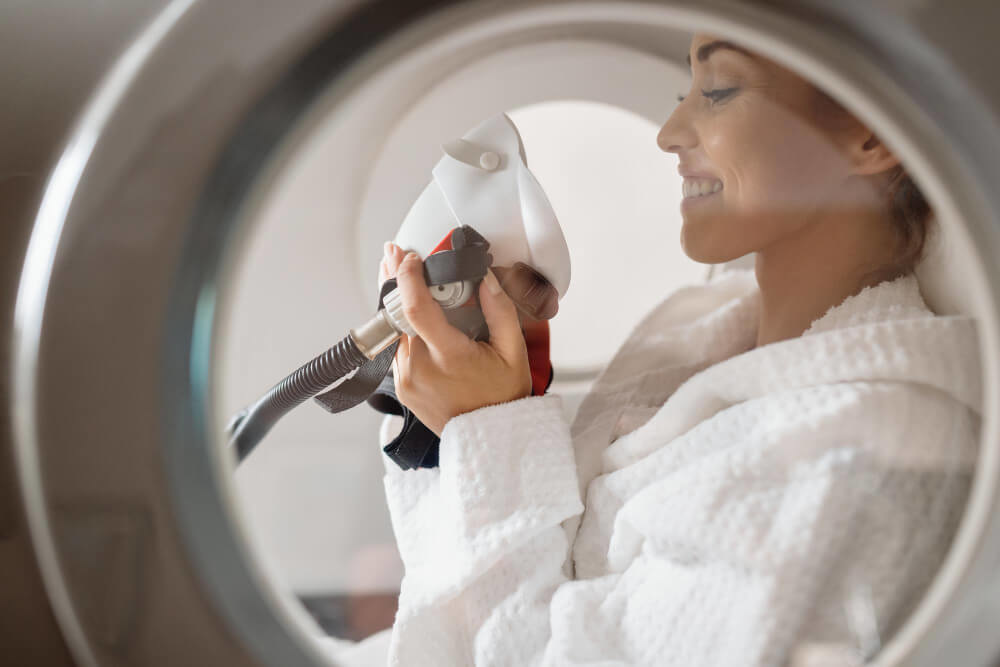Longevity Training: Your Ultimate Guide to Living Longer and Stronger
What if you could not only add years to your life, but life to your years? This is the central promise of a growing field focused on enhancing both lifespan and healthspan. We are talking about the ability to not just live longer, but to remain vibrant, active, and cognitively sharp well into our later decades. The key to unlocking this potential isn’t a magic pill, but a strategic and intelligent approach to physical fitness.
This approach is a core component of a comprehensive strategy to optimize health, and it’s more accessible than you might think. It moves beyond traditional fitness goals like aesthetics or peak athletic performance, focusing instead on building a body that is resilient, functional, and resistant to the declines associated with aging. This is the essence of longevity training, a framework designed to help you thrive for as long as possible.
By integrating specific types of exercise that target the underlying processes of aging, you can fundamentally change your health trajectory. This isn’t about becoming a professional athlete overnight. It’s about making consistent, informed choices that build a robust foundation for a long and healthy future, ensuring your body can support the life you want to live, for many years to come.

What Is the Real Goal of Longevity Training?
The primary objective is to extend your healthspan, which is the period of your life spent in good health, free from chronic disease and disability. While increasing lifespan, or the total number of years you live, is a part of it, the quality of those years is paramount. Longevity training aims to compress the period of sickness and decline into the shortest possible time at the very end of life.
Imagine being able to play with your great-grandchildren, travel the world in your 80s, or simply carry your own groceries and live independently in your 90s. These are the tangible outcomes of a successful longevity strategy. It’s about preserving function, both physical and cognitive, so you can continue to engage with the world in a meaningful way.
This means building a body that can resist the ‘four horsemen’ of chronic disease: cardiovascular disease, cancer, neurodegenerative disease, and metabolic dysfunction like type 2 diabetes. Exercise is one of the most powerful tools we have to combat all four, making it a non-negotiable pillar of any serious anti-aging protocol.

Why Is Movement So Crucial for a Longer Life?
At a cellular level, physical activity is a powerful signaling agent. It tells your body to repair, rebuild, and become more efficient. Regular exercise improves insulin sensitivity, reduces chronic inflammation, strengthens your cardiovascular system, and stimulates the release of brain-derived neurotrophic factor (BDNF), which is like fertilizer for your brain cells.
Inactivity, on the other hand, accelerates the aging process. It leads to sarcopenia, the age-related loss of muscle mass, and osteoporosis, the weakening of bones. This decline in musculoskeletal health dramatically increases the risk of falls and fractures, a major cause of lost independence and mortality in older adults.
Think of your body as a dynamic system that requires regular input to maintain its integrity. Movement is that input. Without it, the system begins to degrade. By embracing a structured training plan, you are actively choosing to preserve your physical capital and invest in your future self.

What Are the Core Pillars of Longevity Exercise?
A comprehensive longevity training program is often described as having four key pillars. Neglecting any one of them leaves you vulnerable. These pillars are stability, strength, aerobic efficiency, and anaerobic performance. Each one targets a different aspect of physical decline, and together they create a powerful synergy that promotes a long and functional life.
This framework ensures you are not just a ‘cardio person’ or a ‘weightlifter’ but a well-rounded physical specimen, capable of handling a wide variety of challenges. It prepares your body not for a specific sport, but for the sport of life, which requires a blend of all these attributes.
Let’s break down each pillar to understand its unique contribution to your overall healthspan and how you can start incorporating it into your routine.

How Does Stability Form the Foundation?
Before you can build strength or endurance, you need a stable base. Stability is your ability to control movement and maintain balance. It involves your core musculature, the small stabilizing muscles around your joints, and your neuromuscular connection, which is how your brain communicates with your body.
Think of stability as the chassis of a car. You wouldn’t put a high-performance engine in a weak, wobbly frame. Similarly, you shouldn’t layer heavy strength work or intense cardio on top of an unstable body. Doing so is a recipe for injury, which is a major setback on the path to longevity.
Practical stability exercises include things like single-leg balances, bird-dog, dead bug, and various plank holds. It also includes dynamic movements that challenge your balance and coordination. The goal is to create a body that is intrinsically stable, reducing the risk of falls and ensuring that your movements are efficient and safe.

Why Is Strength Training Non-Negotiable?
After the age of 30, most adults lose between 3-8% of their muscle mass per decade, a process called sarcopenia. This loss of muscle is a primary driver of frailty and metabolic dysfunction in aging. Strength training is the single most effective way to combat this decline.
Maintaining or building muscle mass does more than just make you look strong. Muscle is a metabolically active tissue. It acts as a storage sink for glucose, improving your insulin sensitivity and protecting against type 2 diabetes. Strong muscles also support strong bones, directly fighting osteoporosis.
Your training should focus on compound movements that recruit multiple muscle groups. Exercises like squats, deadlifts, overhead presses, and rows are incredibly effective. The goal is to build functional strength that translates directly to real-world activities, like lifting a heavy suitcase into an overhead bin or getting up off the floor with ease. The ideas of experts in the field, like exploring Peter Attia’s approach to longevity, often highlight the critical importance of grip strength and overall muscular development as predictors of a long, healthy life.

How Does Aerobic Exercise Impact Your Healthspan?
Aerobic exercise, often called cardio, is essential for the health of your heart, lungs, and blood vessels. It improves your body’s ability to take in and use oxygen, a measure known as cardiorespiratory fitness. This type of fitness is one of the strongest predictors of all-cause mortality; the better your aerobic base, the lower your risk of dying from any cause.
At the cellular level, aerobic exercise is a potent stimulus for mitochondrial health. Mitochondria are the power plants of your cells, responsible for producing the energy that fuels your entire body. As we age, our mitochondria can become less numerous and less efficient. Aerobic exercise promotes mitochondrial biogenesis, the creation of new mitochondria, and improves the function of existing ones.
This is why a significant portion of a longevity-focused exercise plan should be dedicated to steady-state aerobic work. It’s the foundational work that builds a robust and efficient energy system, supporting every other function in your body.

What Is Zone 2 Training and Why Is It So Important?
One of the most effective ways to build your aerobic base and improve mitochondrial function is through a specific intensity level known as Zone 2. This is a low-intensity effort where you can comfortably hold a conversation without gasping for breath. It might feel surprisingly easy, but the physiological benefits are profound.
When you exercise in Zone 2, your body becomes incredibly efficient at burning fat for fuel. More importantly, it specifically stresses your mitochondria in a way that forces them to become more numerous and efficient. This cellular adaptation is at the heart of improving metabolic health and endurance. The science behind Zone 2 training shows it is a sustainable way to build a massive aerobic foundation without causing excessive stress or inflammation.
Most experts recommend that the majority of your weekly cardio time, perhaps 80% of it, should be spent in this zone. This could be a brisk walk, a light jog, cycling, or swimming. The key is to maintain a steady, conversational pace for a sustained period, typically 45 minutes or more per session.

What About High-Intensity Workouts?
While Zone 2 builds the foundation, the fourth pillar, anaerobic performance, builds the peak. This involves short bursts of very high-intensity effort that push you to your maximum capacity. This type of training is crucial for improving your VO2 max, which is the maximum amount of oxygen your body can utilize during intense exercise.
VO2 max is another incredibly strong predictor of longevity. A high VO2 max indicates a highly efficient cardiovascular and respiratory system. High-intensity interval training (HIIT), which involves alternating between all-out efforts and brief recovery periods, is the most effective way to improve this metric.
These workouts are demanding and should be done sparingly, perhaps once or twice a week. A typical session might involve 4 minutes of intense effort followed by 4 minutes of recovery, repeated 4 times. While challenging, this small dose of high intensity provides unique benefits that lower-intensity training cannot, rounding out a complete fitness profile.

How Do You Build a Personalized Longevity Training Plan?
Putting it all together can seem daunting, but the principle is simple: be consistent and cover all your bases. A well-rounded week should include dedicated time for each of the four pillars. Start where you are. If you are currently inactive, the first step is simply to start moving more.
Aim for a schedule that includes two to three days of strength training, focusing on full-body compound movements. Add three to four days of Zone 2 cardio, with each session lasting 45 to 60 minutes. Finally, incorporate one session of high-intensity interval training.
Remember to weave in stability and mobility work as well. This can be part of your warm-up before strength sessions or done on its own on recovery days. The most important thing is to listen to your body, prioritize recovery and sleep, and gradually increase the volume or intensity over time. The overall goal of consistent exercise and physical activity is to build sustainable habits that you can maintain for the rest of your life.

What Specific Exercises Should I Include?
For strength, prioritize the big movements. This includes variations of squats, deadlifts or hip hinges, horizontal and vertical presses like push-ups and overhead presses, and horizontal and vertical pulls like rows and pull-ups or lat pulldowns. These movements build the kind of practical strength you need every day.
For Zone 2 cardio, choose an activity you enjoy and can do consistently. This could be cycling on a stationary bike, jogging on a treadmill, using an elliptical, swimming, or even hiking on an incline. The key is monitoring your heart rate or perceived exertion to stay in that conversational-effort zone.
For high-intensity work, simple sprints on a bike or rower are very effective. The key is to go all-out during the work interval. The specific exercise matters less than the level of effort you put into it. And for stability, simple drills like standing on one foot while brushing your teeth can make a surprising difference over time. Ultimately, the benefits of exercise for longevity are accessible at any age and with any starting fitness level.

How Does This Fit into Professional Healthcare?
The principles of longevity training are not just for fitness enthusiasts; they represent a fundamental shift in how medicine approaches aging. Forward-thinking healthcare professionals are moving beyond simply treating disease and are now proactively working to prevent it and optimize healthspan for their patients. This requires a deeper understanding of exercise physiology, metabolic health, and cellular biology.
This evolving landscape has created a need for specialized education. Clinicians are seeking to understand the science behind these interventions so they can confidently guide their patients. They need to know how to prescribe exercise as medicine, interpreting biomarkers and creating personalized plans that address the root causes of aging.
This is where advanced medical education comes into play, bridging the gap between conventional medicine and the cutting edge of health optimization. It equips practitioners with the tools to implement these powerful strategies in a clinical setting, transforming patient outcomes.

What is longevity medicine training?
This specialized field goes beyond the basics of exercise science. When people ask what is longevity medicine training, they are asking about a comprehensive curriculum that integrates exercise physiology with nutritional science, hormone optimization, cellular health, and advanced diagnostics. It teaches healthcare providers how to view the body as an interconnected system and how to use interventions like targeted exercise protocols to positively influence that system.
This training provides a framework for assessing a patient’s current state of health and creating a long-term strategy to enhance their resilience against age-related decline. It covers the ‘how’ and the ‘why’ behind using Zone 2 training to improve mitochondrial health or prescribing specific strength protocols to reverse sarcopenia, allowing practitioners to offer truly personalized and preventative care.

How can physicians get certified in this field?
For medical professionals looking to become experts in this domain, formal certification is becoming the gold standard. A dedicated longevity medicine certification for physicians provides the structured, evidence-based education needed to master these concepts. These programs are designed to provide doctors with the credibility and practical skills to integrate longevity principles into their practice.
Such certifications ensure that practitioners are not just following trends but are grounded in the latest scientific research. They learn to apply these protocols safely and effectively, helping their patients navigate the complexities of nutrition, exercise, and other lifestyle interventions. This level of expertise is what will define the future of preventative and personalized medicine.
Ultimately, longevity training is a journey of empowerment. It puts the power to shape your aging process directly into your hands. By embracing the four pillars of stability, strength, aerobic efficiency, and anaerobic performance, you are not just exercising; you are making a profound investment in your future. You are building a life defined not by limitations, but by decades of continued vitality, strength, and purpose.
Frequently Asked Questions

How is a longevity physician different from my regular doctor?
A primary care physician’s main role is to diagnose and treat existing diseases, managing acute and chronic conditions according to established guidelines. In contrast, a longevity physician’s core competency is proactive health optimization with the goal of extending healthspan—the period of life spent in good health. They focus on preventing disease and slowing the biological aging process itself, rather than just reacting to symptoms once they appear.
This difference in focus means their approach is fundamentally distinct and often more data-intensive. While your regular doctor manages your current health, a longevity specialist uses advanced diagnostics like genomic sequencing and deep biomarker analysis to identify future health risks. Their expertise lies in creating a highly personalized, long-term strategy to mitigate those risks years or even decades before they would typically manifest as a clinical problem.

Do I need to be a certain age to see a longevity physician?
No, longevity medicine is beneficial for adults of all ages, and its core principles are often most impactful when implemented earlier in life. A key competency of a longevity physician is understanding that the biological processes of aging begin long before visible signs appear. Engaging with one in your 30s or 40s allows you to establish a crucial health baseline and proactively address risks before significant age-related decline occurs.
For younger patients, the focus is often on building a strong foundation through optimized nutrition, exercise, and sleep, as well as mitigating any identifiable genetic predispositions. For middle-aged and older individuals, the physician applies their expertise to not only prevent future issues but also to potentially reverse existing biological damage. The goal at any age is to compress morbidity, meaning you spend fewer years in poor health.

What does the first appointment with a longevity physician typically involve?
The initial consultation is an extensive deep-dive into your entire health picture, going far beyond a standard physical exam. Expect to spend a significant amount of time discussing your personal and family medical history, lifestyle habits, diet, stress levels, and specific long-term health goals. A core skill of a longevity physician is this ability to synthesize vast amounts of qualitative and quantitative information to understand your unique biology.
Following this in-depth conversation, the physician will order a comprehensive panel of advanced diagnostic tests that are not typically part of a routine check-up. These may include in-depth bloodwork to assess biomarkers of aging, inflammation, and metabolic health, as well as potential genetic testing or advanced imaging. This data-gathering phase is critical, as it provides the raw information the physician will use their expertise to analyze and build your personalized health optimization plan.
Discover the most comprehensive functional medicine training, longevity training, and biohacking certification programs designed specifically for healthcare professionals, medics, and clinic owners who want to master regenerative medicine protocols and anti-aging therapies. At Talking Longevity, we deliver cutting-edge education in cellular health optimization, nutritional medicine, hormone balancing, NAD+ therapy, and advanced bio-hack strategies to help you extend patient health span, improve outcomes, and grow your clinic’s revenue. Our globally accessible longevity training courses combine evidence-based science with practical implementation, giving you the tools to stand out in the fast-growing fields of personalized medicine, integrative health, and regenerative longevity medicine. Whether you’re seeking functional medicine certification, biohacking training for medics, or a complete longevity clinic growth strategy, our programs equip you with the skills, credibility, and business systems to lead the future of health.







